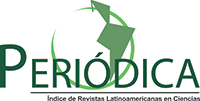Thermographic study of the pathological manifestations due to humidity and of the conservation state of the Santa Maria Basilica’s roof
DOI:
https://doi.org/10.21041/ra.v12i1.567Keywords:
thermography, humidities, filtrations, efflorescence, historical buildingAbstract
This paper analyzes the current state of the roof of the Basilica of Santa Maria, Alicante, Spain. This building dates back to the 13th century and is catalogued. For the analysis of the efflorescence observed, an analysis of the constructive typology is carried out, as well as a visual analysis of the state of the same, describing the existing pathological manifestations, both in the exterior area of the roofs, as well as in the interior area of the rooms under them. For the technical analysis of the possible leaks from the roof to the interior rooms of the basilica, a watertightness test and the verification through the control of the variation of temperatures by means of thermographic analysis are carried out. It can be concluded the existence and position of leaks that have damaged this listed building.
Downloads
References
Barbosa, M.T.G., Rosse, V. J., Laurindo, N. G. (2021), “Thermography evaluation strategy proposal due moisture damage on building facades”, Journal of Building Engineering, 43, art. no. 102555, DOI: https://doi.org/10.1016/j.jobe.2021.102555
Barreira, E., Almeida, R.M.S.F., Simões, M.L., Rebelo, D. (2020), “Quantitative infrared thermography to evaluate the humidification of lightweight concrete”, Sensors (Switzerland), 20 (6), art. no. 1664, DOI: https://doi.org/10.3390/s20061664
Barreira, E., Almeida, R.M.S.F., Simões, M.L. (2021), “Emissivity of building materials for infrared measurements”, Sensors, 21 (6), art. no. 1961, pp. 1-13. DOI: https://doi.org/10.3390/s21061961
Bevià García, M., Azuar Ruiz, R. (2005), “Santa María descubierta: Arqueología, arquitectura-cerámica: Excavaciones en la Iglesia de Santa María de Alicante (1997-1998)”. Alicante. Fundación MARQ. ISBN: 84-609-7478-2
Brotóns, V., Tomás, R., Ivorra, S., Alarcón, J.C. (2013), “Temperature influence on the physical and mechanical properties of a porous rock: San Julian's calcarenite. Engineering Geology”, 167, pp. 117-127. DOI: https://doi.org/10.1016/j.enggeo.2013.10.012
Giovannacci, D., Brissaud, D., Mertz, J.-D., Mouhoubi, K., Bodnar, J.-L. (2017), “Nonintrusive tools to detect salts contamination in masonry: Case study of Fontaine-Chaalis church”, Proceedings of SPIE - The International Society for Optical Engineering, 10331, art. no. 1033103. DOI: https://doi.org/10.1117/12.2269727
Grossi, C. M. Esbert, R. M. (1994), “Las sales solubles en el deterioro de rocas monumentales. Revisión bibliográfica”. Materiales de Construcción, Vol. 44, nº 235. DOI: https://doi.org/10.3989/mc.1994.v44.i235.579
Louis, M., García del Cura, M. A., Spairani, Y., de Blas. D. (2001), “The Civil Palaces in Gravina Street, Alicante: building stones and salt weathering. Materiales de Construcción”, Vol. 51, nº262. DOI: https://doi.org/10.3989/mc.2001.v51.i262.369
Lucchi, E. (2018), “Applications of the infrared thermography in the energy audit of buildings: A review”, Renewable and Sustainable Energy Reviews, 82, pp. 3077-3090. DOI: https://doi.org/10.1016/j.rser.2017.10.031
Paricio Ansuateguie, I. “La construcción de la Arquitectura. Institut de Tecnologia de la Construcció de Catalunya”, 1985, T.2, p. 26. ISBN: 978-84-7853-375-6
Norma Básica de la Edificación. Cubiertas con materiales bituminosos: “NBE QB-90”. Gobierno de España.
Ruiz Valero, L., Flores Sasso, V., Prieto Vicioso, E. (2019), “In situ assessment of superficial moisture condition in façades of historic building using non-destructive techniques”, Case Studies in Construction Materials, 10, art. no. e00228, DOI: https://doi.org/10.1016/j.cscm.2019.e00228
Silva,G. P.,Batista, P. I. B.,Povóas,Y. V. (2019),“Uso de termografía infrarroja para estudiar el desempeño térmico de paredes: una revisión bibliográfica”, Revista ALCONPAT, 9(2), pp. 117 –129, DOI: http://dx.doi.org/10.21041/ra.v9i2.341
Takeda, T. Mazer, W. (2018), “Potencial da análise termográfica para avaliar manifestações patológicas em sistemas de revestimentos de fachadas”, Revista ALCONPAT, 8 (1), pp. 38 – 50, DOI: http://dx.doi.org/10.21041/ra.v8i1.181
Valluzzi, M.R., Lorenzoni, F., Deiana, R., Taffarel, S., Modena, C. (2019), “Non-destructive investigations for structural qualification of the Sarno Baths, Pompeii”, Journal of Cultural Heritage, 40, pp. 280-287. DOI: https://doi.org/10.1016/j.culher.2019.04.015
Vijay, P.V., Tulasi Gadde, K., Gangarao, H.V.S. (2019), “Structural Evaluation and Rehabilitation of Century-Old Masonry and Timber Buildings”, Journal of Architectural Engineering, 25 (2), art. no. 05019001, DOI: https://doi.org/10.1061/(ASCE)AE.1943-5568.0000350
Garrido, I., Solla, M., Lagüela, S., Fernández, N. (2020), “Irt and gpr techniques for moisture detection and characterisation in buildings”, Sensors (Switzerland), 20 (22), art. no. 6421, pp. 1-38. DOI: https://doi.org/10.3390/s20226421
Martínez-Garrido, M.I., Fort, R., Gómez-Heras, M., Valles-Iriso, J., Varas-Muriel, M.J. (2018), “A comprehensive study for moisture control in cultural heritage using non-destructive techniques”, Journal of Applied Geophysics, 155, pp. 36-52. DOI: https://doi.org/10.1016/j.jappgeo.2018.03.008
Zhang, F., Zhang, X., Li, Y., Tao, Z., Liu, W., He, M. (2018), “Quantitative description theory of water migration in rock sites based on infrared radiation temperature”, Engineering Geology, 241, pp. 64-75. DOI: https://doi.org/10.1016/j.enggeo.2018.05.006
Thomas, c., Lombillo, I., Setién, J., Polanco, J. A., Villegas, L. (2008), “Absorción por capilaridad y consolidación de materiales pétreos del patrimonio histórico construido impermeabilizados y reforzados con productos hidrofugantes y consolidantes comerciales”. Tecnología de la rehabilitación y la gestión del patrimonio construido (REHABEND). ISBN: 978-84-692-5650-3.
UNE EN 13187 (1998). “Prestaciones térmicas de edificios. Detección cualitativa de irregularidades en cerramientos de edificios. Método de infrarrojos”. Asociación Española de Normalización.
Downloads
Published
How to Cite
Issue
Section
License
_______________________________
License in effect from September 2020
You are free to:
- Share — copy and redistribute the material in any medium or format for any purpose, even commercially.
- Adapt — remix, transform, and build upon the material for any purpose, even commercially.
- The licensor cannot revoke these freedoms as long as you follow the license terms.
Under the following terms:
- Attribution — You must give appropriate credit , provide a link to the license, and indicate if changes were made . You may do so in any reasonable manner, but not in any way that suggests the licensor endorses you or your use.
- No additional restrictions — You may not apply legal terms or technological measures that legally restrict others from doing anything the license permits.
Notices:
You do not have to comply with the license for elements of the material in the public domain or where your use is permitted by an applicable exception or limitation .
No warranties are given. The license may not give you all of the permissions necessary for your intended use. For example, other rights such as publicity, privacy, or moral rights may limit how you use the material.





















.png)














